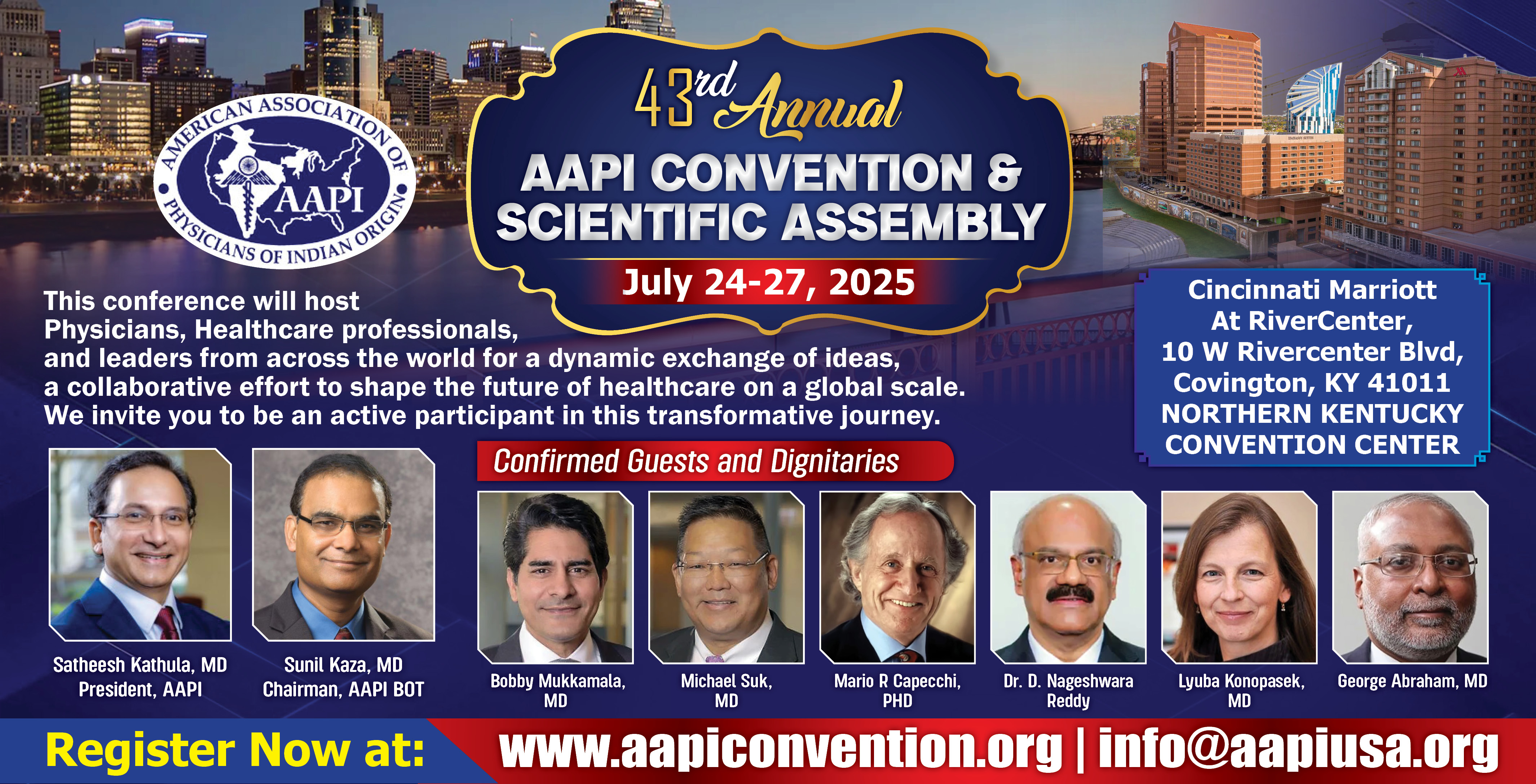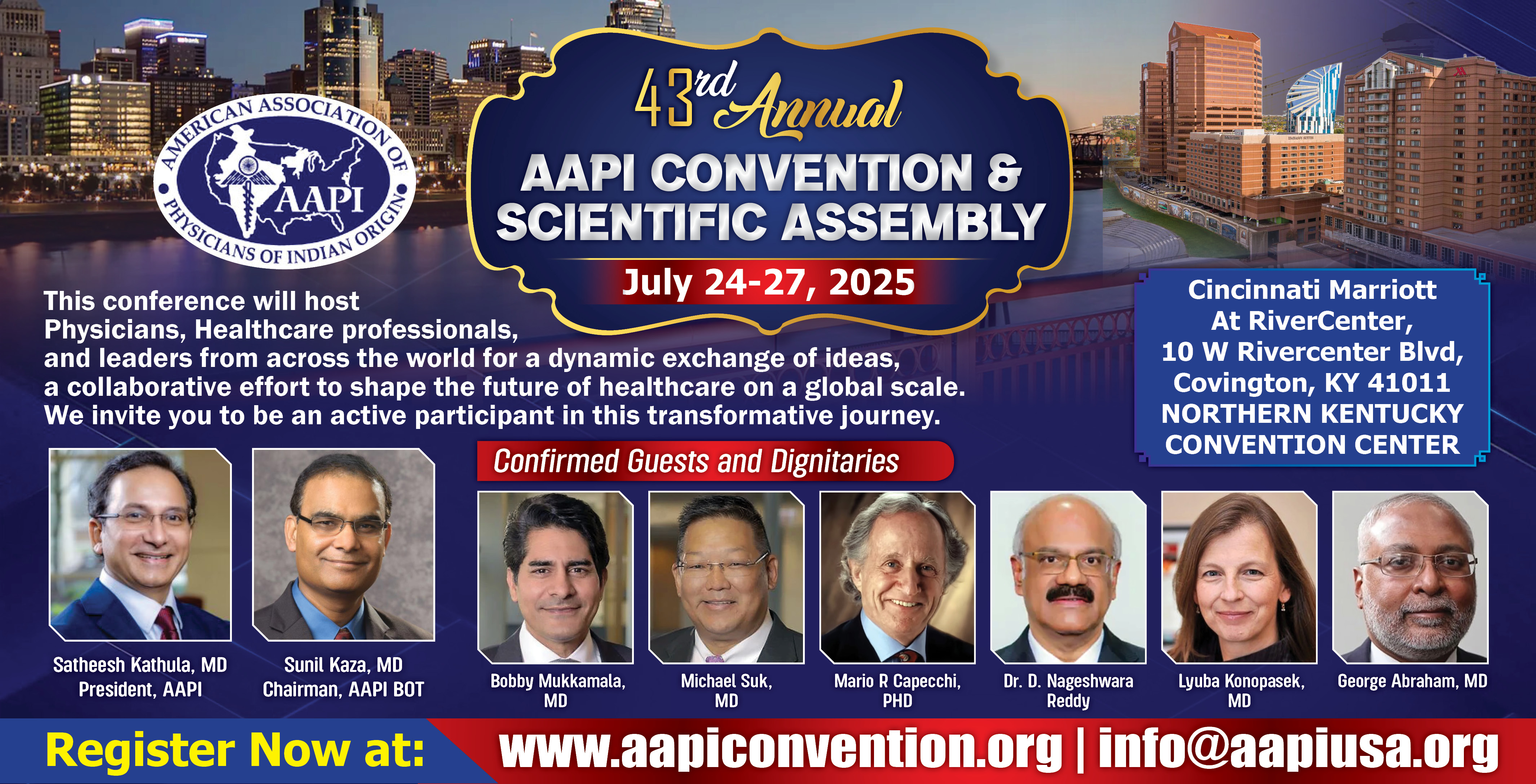America
What India and Virgin Mary have in common (Travel with MP Prabhakaran)
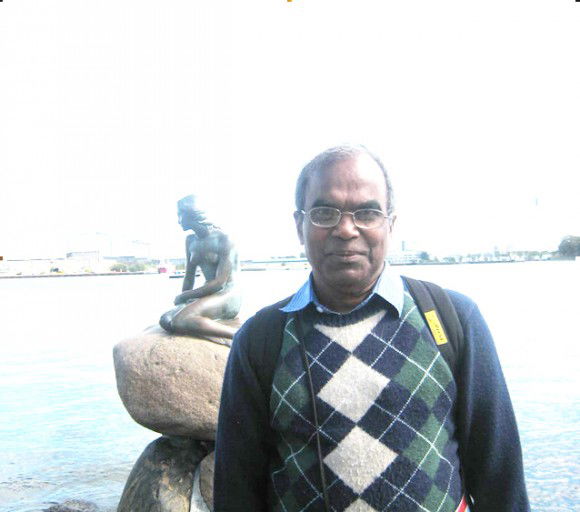
(This is Chapter 24 from Mr. Prabhakaran’s book, An Indian Goes Around the World – I: Capitalism Comes to Mao’s Mausoleum, which we have been serializing in this space. Chapter 25, “One of South Africa’s Ruling Class Then, a Migrant Farm Worker in Texas Now,†will be published next week. Read the series every Monday. – Editor)
COPENHAGEN, Denmark; August 15, 2009 – August 15, to state the obvious, is the most important day on India’s political calendar. Most politically conscious Indians wake up on this day with their country very much on their minds. That’s the case with me, too, when I woke in my hotel room in this Danish capital, early this morning.
I thought about the marvelous progress India has made since it attained independence from British colonial rule 62 years ago today. I once again thought about what I consider the country’s proudest achievement since independence: its steady development into a mature democratic polity, in spite of having been on the brink of disintegration many a time.
“How many countries in the world, which emerged from colonialism or other kinds of authoritarianism, about the same time as India did, can boast the kind of democratic continuity in governance as India can?†I repeated the question for the umpteenth time. This time, of course, to myself. This time, being a solitary wanderer in Europe, there was nobody around with whom I could share my thoughts. While most former colonies that became independent about the same time as India are still struggling to establish their national identities, India is well on its way to becoming a world power.
Today is the last day of my month-long learning-cum-pleasure tour of Europe. My flight to New York is scheduled to leave at 12:20 p.m. Which means that I have a few hours to spare before leaving for the airport. “What better way to spend those hours than celebrating India’s independence,†I said to myself. “And what better place to do it than the embassy of India in the city. I don’t think there will be any Indian embassy anywhere in the world which doesn’t hold some celebratory event on this day. Also, I may get an opportunity to meet some fellow Indians living here.†With a heart filled with thoughts like these, I left my hotel room and headed for the Indian embassy in Copenhagen.
The embassy is a bit far from the city proper. After a 20-minute train ride from the central train station, I got off at a place called Svenemollen, as instructed by Yashpal from New Delhi who owns a pizzeria in this city. There was hardly anyone on the street to seek direction from. It was 8 o’clock in the morning, and raining. On rainy weekend mornings, streets in Scandinavian suburbs are more desolate than usual. After several minutes’ walk – in the wrong direction, as I found out later – I spotted a shop that was open. The shop sold fresh salmon and shrimp. Fortunately for me, the Albanian assistant to the Danish shop-owner spoke some English. After contacting someone by his cell phone, he was able to give me the right direction to the embassy. I thanked him profusely for his help.
The pink color of the embassy building reminded me of the beautiful Pink City of Rajasthan. There, by the way, begins and ends anything good I can say about it. There was not a single soul around the embassy. And there was not a single piece of decoration that would suggest that the place was about to celebrate the most important event in the history of the country it represents.
I hung around for a while, reading notices on the door, one of which referred to the previous day. It said that the place would be closed on August 14, “on the occasion of Janmashtami,†Lord Krishna’s birthday. “But what about India’s birthday?†That was the immediate question that I had.
A few minutes later, I saw a man wearing a turtle-neck jacket, which made it clear that he worked for the Indian government, and with a bunch of keys in his hand, approach the door. He looked 50-something, but had yet to learn how to smile. He did return my “Good Morning,†though, but in a tone that suggested that I was being a nuisance.
“Is there going to be any celebration here today?†I asked him.
“Yes,†he said. “It begins at ten o’clock.â€
I was disappointed. I had to be at the airport well before 10. I headed for the train station, to go back to the hotel and pick up my bags.
August 15 Is a Holiday in Parts of Germany
The experience I had this morning was in striking contrast to the one I had a year ago today. On August 15, 2008, I was in Munich, Germany. The day was set aside for a visit to the Dachau Concentration Camp Memorial. Like today, last year also, India was very much on my mind when I woke up in the morning and during most of the day.
Dachau is 10 miles away from Munich. I was at the main train station, waiting for the train – S2 – that would take me there. When no S2 train showed up for nearly 30 minutes, I asked a lady standing nearby, waiting for another train, what the problem could be.
“Oh, you didn’t hear the announcement? It’s also shown here,†she said, pointing to the electronic display board in front of us. “Today, S2 trains are leaving from another platform because of track work.â€
Both the display and the announcement were in German. I confessed to my ignorance and then added, “Before I come to Germany next time, I will make sure that I acquire at least a smattering of the language.â€
“Don’t’ be apologetic,†she said, “many of my friends don’t speak any language other than German. Today is a holiday. Most of the repair work on rail-tracks is done on holidays and weekends. Your train will be leaving from that area.†She pointed to an area outside the main section of the station. It was a few minutes’ walk from where we were standing.
“August 15 is a holiday in Germany, too!†I exclaimed to the lady. “I am thrilled to hear that.â€
“No, only in this part of Germany.†Looking at the train that was approaching, she added, “Nice talking to you.†She walked toward the train.
As her train started moving, she once again indicated, this time with her thumb, the area from which Dachau-bound trains would be departing.
There were no escalators in that area. One had to walk up a few steps to reach the platform level. When I saw a woman struggling to walk up, carrying a stroller with her baby still seated in it, I rushed toward her and caught one end of the stroller. “Let me help you,†I told her.
“That’s so kind of you,†she said.
When we reached the platform, I told her where I was going and asked whether I was on the right platform.
“I am taking the same train,†she said. “I will be getting off before you.†Then she added, with a lovely smile, “Yes, you are on the right platform.â€
Once inside the train and comfortably seated side by side, I told her, “I never knew that parts of Germany care for India this much.â€
“What do you mean?†she asked.
“Are you not enjoying your holiday today?†I asked her.
“Yes, I am,†she replied. “That’s why I am visiting my mother today. She is a practicing Catholic. Though I am not religious, I make her happy by visiting her on holidays like this one. I like India. So do most of my friends. But this holiday has nothing to do with India.â€
“How stupid of me,†I said. “Today is India’s Independence Day. I thought the holiday is in observance of that.â€
“No,†she said, “it is in observance of the Assumption of the Virgin Mary. Catholics believe that the Virgin Mary went to Heaven on August 15.â€
She also told me that it was a holiday only in the two Catholic-majority provinces of Germany – Bavaria and Saarland. Munich is the capital of Bavaria. The Catholic-majority provinces enjoy three more paid holidays than the rest of the country. The other two are January 6 (Epiphany) and November 1 (All Saints Day).
After thanking the young lady for the new piece of information, I added, “See, I am an agnostic.â€
“I am an agnostic, too,†she replied. “But that doesn’t stop me from enjoying holidays like this one, especially when they are paid holidays.â€
I laughed, appreciating her candor. “Some of my best friends are Catholics,†I told her. “They seldom miss an opportunity to chastise me on my agnosticism and give me sermons on Christianity and the Bible. But not once did they mention this Virgin Mary connection to the day of India’s Independence. I had to travel half the world to learn about it, that too from an agnostic German.â€
“Life is a continuous process of learning,†she said. “Isn’t it wonderful?â€
“And that’s why I love traveling,†I told her.
As the train approached the next station, she got up, saying, “I have to get off here.â€
“Let me help you with the stroller,†I said, “you carry the baby.†As we walked toward the door, I added, “Whenever you have to climb steps next time, make sure that you un-strap the baby from the stroller and carry him separately.â€
She thanked me. “I like that chastising tone,†she added. “You remind me of my ex-husband.â€
She said the last part with a squint and an endearing smile. It was too late for me to explore what that squint meant. We waved goodbye to each other when the train started moving.
I went back to my seat, feeling great.
â—
That happened a year ago today. Throughout the past year, the new piece of information about August 15 that I received from the young German has been the subject of a quiz I tried on my Catholic-Indian friends. I might have done it a dozen times by now. The quiz would begin thus: “What do India and Virgin Mary have in common?â€
When my friends looked puzzled, I would scold them, with the superior air of a priest: “What kind of Catholics are you? You give me lectures on the Bible at the drop of a hat. And this simple Biblical fact you have to learn from an infidel! Shame on you.â€
“OK, we admit we don’t know,†my friends would say, “What is the connection between the two? Tell us.â€
“You know the date of India’s Independence,†I would begin my answer.
“Oh, we get it,†my friends would stop me from continuing. Then they would add, “Now, tell us: Whom did you get this information from?â€
With great relish, I would tell them what happened to me in Munich, on August 15, 2008. I always made it a point not to omit from the story the squint and the smile with which the lady referred to her ex-husband.
â—
CORRECTION: John Moran, a friend of mine who lives in New York, has this to say about my quiz: “I am a non-theist Catholic and want to ‘correct’ one thing: the Assumption is nowhere in the Bible; it is part of ‘Tradition,’ which for Catholics is equal to the Bible as a source of divine revelation. How knotty these fine points about religion can be!â€
Thank you, John. Thank you for correcting me.
Photo-1:
The author, in front of the Mermaid statue in Copenhagen, Denmark. The Mermaid is a big tourist attraction in the Danish capital.
Photo-2
The Indian Embassy in Copenhagen, Denmark, as seen by the author a little before 9 a.m., on August 15, 2009. He visited the place, hoping to witness some events celebrating India’s Independence. “The celebrations will begin at 10 a.m.,†an embassy official told him, brusquely.
(To be concluded)
(M. P. Prabhakaran can be reached by email at [email protected] or [email protected]
http://dlatimes.com/article.php?id=50260
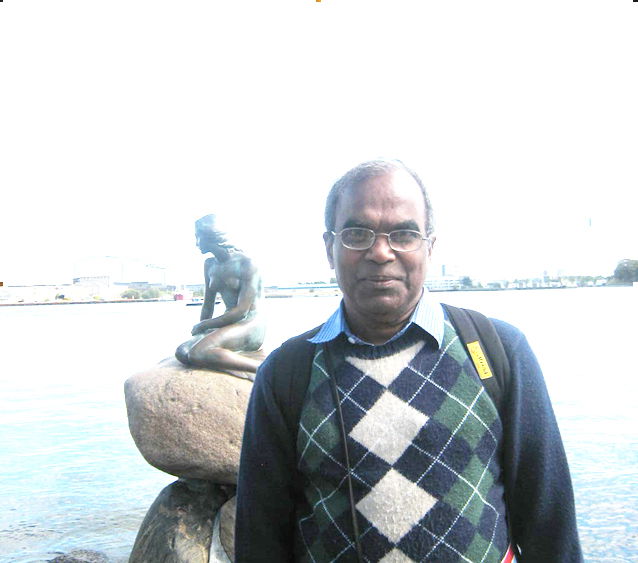
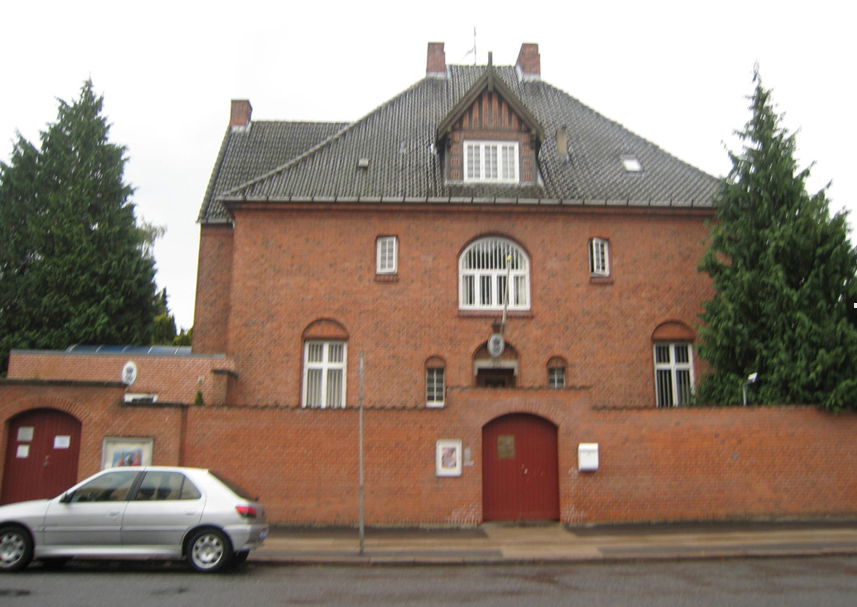 The author, in front of the Mermaid statue in Copenhagen, Denmark
The author, in front of the Mermaid statue in Copenhagen, Denmark 





































